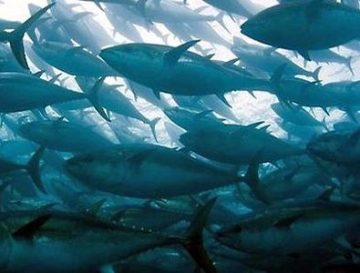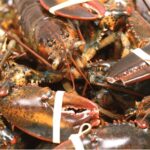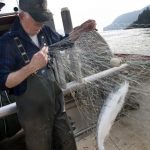Tag Archives: International Union for Conservation of Nature
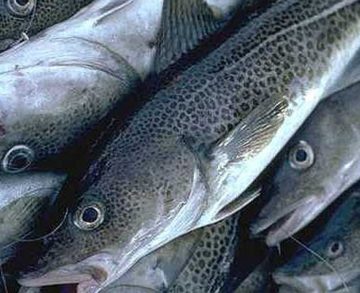
30 years after the moratorium, what have we really learned about cod and science?
“Although the industry has many problems, a shortage of fish is not one of them,” confidently pronounced the 1982 report of the Task Force on Atlantic Fisheries, which is commonly called the Kirby report. But a shortage of fish, as we now know, would become an insurmountable problem a decade later —so much so that on July 2, 1992, the federal government shuttered the commercial Northern cod fishery, once Canada’s largest fishery. So where have these vast learnings taken us 25 to 30 years on? Fisheries management remains highly dependent on modelling. >click to read< 17:28
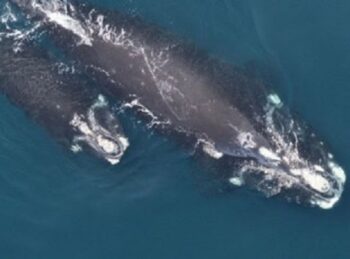
North Atlantic Right Whale: Extinction Is Looming. Everyone’s Fighting.
This May, new rules created for the lobster industry by the National Marine Fisheries Service will become official policy for boats operating in right whale territory. The agency estimates that lobster and Jonah crab traps are responsible for 95 percent of vertical end-line ropes in the areas where whale protections apply and therefore pose the most risk for entangling whales. The Fisheries Service says these changes will reduce the risk of death and serious injury by 69 percent. But in the months after the rules were finalized, the agency has seen pushback from conservation groups, who argue the new protections aren’t enough, and lobster fishing crews, who say the rules will harm their business. >click to read< 14:22
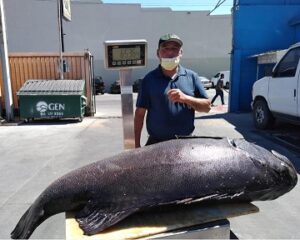
Giant sea bass: scientific research that found them critically endangered stopped at US-Mexico border
Giant sea bass live off the west coast of North America in both Mexican and U.S. waters. I have found that large differences in regulation and research effort between the two countries has led to a significant misunderstanding of giant sea bass population health. In California, commercial fishing for the species began in the late 1880s. Large fish used to be very abundant across the entire range, but the fishery collapsed in the early 1970s. As a response, in 1981 the U.S. banned both commercial and recreational fishing for giant sea bass, and there are many ongoing research and population recovery efforts today. The collapse and subsequent protection and flurry of research in the U.S. stand in stark contrast to Mexico. >click to read< by Arturo Ramírez-Valdez 12:14
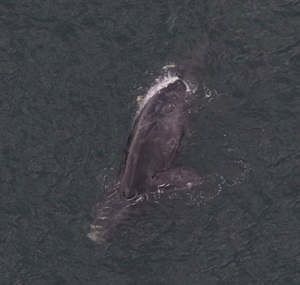
North Atlantic right whale – from Endangered to Critically Endangered
The International Union for Conservation of Nature (IUCN) announced Thursday it has changed the status of North Atlantic right whales on its Red List from endangered to critically endangered, IUCN’s highest risk category for wild species. This means the population has or will decrease by 80 per cent within three generations and is facing an extremely high risk of extinction. According to Canadian conservation group Oceana, at least 31 North Atlantic right whales have been killed since 2017 — 21 of them in Canadian waters. >click to read< 11:45
The International Union for Conservation of Nature changed its Red List Category for North Atlantic right whales from Endangered to Critically Endangered – >click to read<

Northern Right Whales Are on the Brink, and Trump Could Be Their Last Hope
The task of responding will fall to an unlikely champion, President Trump, whose recent appeals for support from Maine lobstermen could clash with the task of saving the right whale. Peter Corkeron, a senior scientist at the New England Aquarium who spent nearly a decade chronicling the gruesome deaths of right whales as the director of the National Oceanic and Atmospheric Association’s research program for large whales, said he feared the listing would have little impact. “Lobstermen certainly recognize the dire circumstance that the right whale species is in right now,” Patrice McCarron, “We’re in this awkward situation where right whales are not doing great, and it’s certainly not the fault of the commercial fisheries.”PEER also filed a complaint last year with the inspector general of the Commerce Department, which oversees NOAA, arguing that federal officials intent on reopening fishing areas have been ignoring their own scientists on climate change as well as other threats to whales. >click to read< 11:37
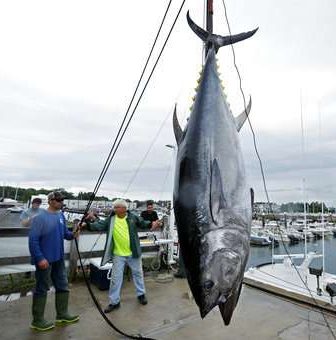
A controversial comeback for a highly prized tuna
“There’s probably no fish that’s ever been more politicized than Atlantic bluefin tuna,” said Golet, a University of Maine professor. “People get a passion for this fish. And people are making a living off of this fish.” The fish have long been at the center of a battle among commercial fishermen who can make a huge amount of money on a single fish, environmentalists who see them as marvels of marine migration, and consumers who pay a hefty price for them in restaurants.,, But international regulators say the species has recently recovered enough that it can withstand more fishing, and U.S. ocean managers implemented an increase of about 17 percent for this summer, to the delight of fishing groups. The decision prompted environmental groups to renew their calls for holding the current line on quotas. >click to read<08:30
Trump Admin Won’t List Non-Endangered Tuna As An Endangered Species
The Trump administration declined a petition to list the Pacific bluefin tuna as “endangered” Tuesday after the Department of Commerce (DOC) found that the fish was not facing any significant threat of extinction. A petition from the Center of Biological Diversity to list the fish under the Endangered Species Act (ESA) triggered the Commerce Department’s review. The review began under former President Barack Obama, and lasted for 12 months before the DOC’s National Marine Fisheries Service (NMFS) issued its findings, according to the notice published in the Federal Register. The Center for Biological Diversity claimed the tuna was at risk of extinction, based on findings by the International Union for Conservation of Nature (IUCN). click here to read the story 20:01
Endangered delicacy: Japan eel on species red list
 TOKYO — The Japanese eel, a popular summertime delicacy that has become prohibitively expensive due to overfishing, has been put on the international conservation “red list” in a move that may speed up Japan’s push for industrial farming of the species. Read more here 11:47
TOKYO — The Japanese eel, a popular summertime delicacy that has become prohibitively expensive due to overfishing, has been put on the international conservation “red list” in a move that may speed up Japan’s push for industrial farming of the species. Read more here 11:47






